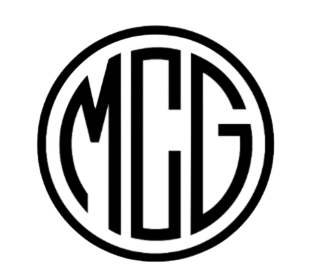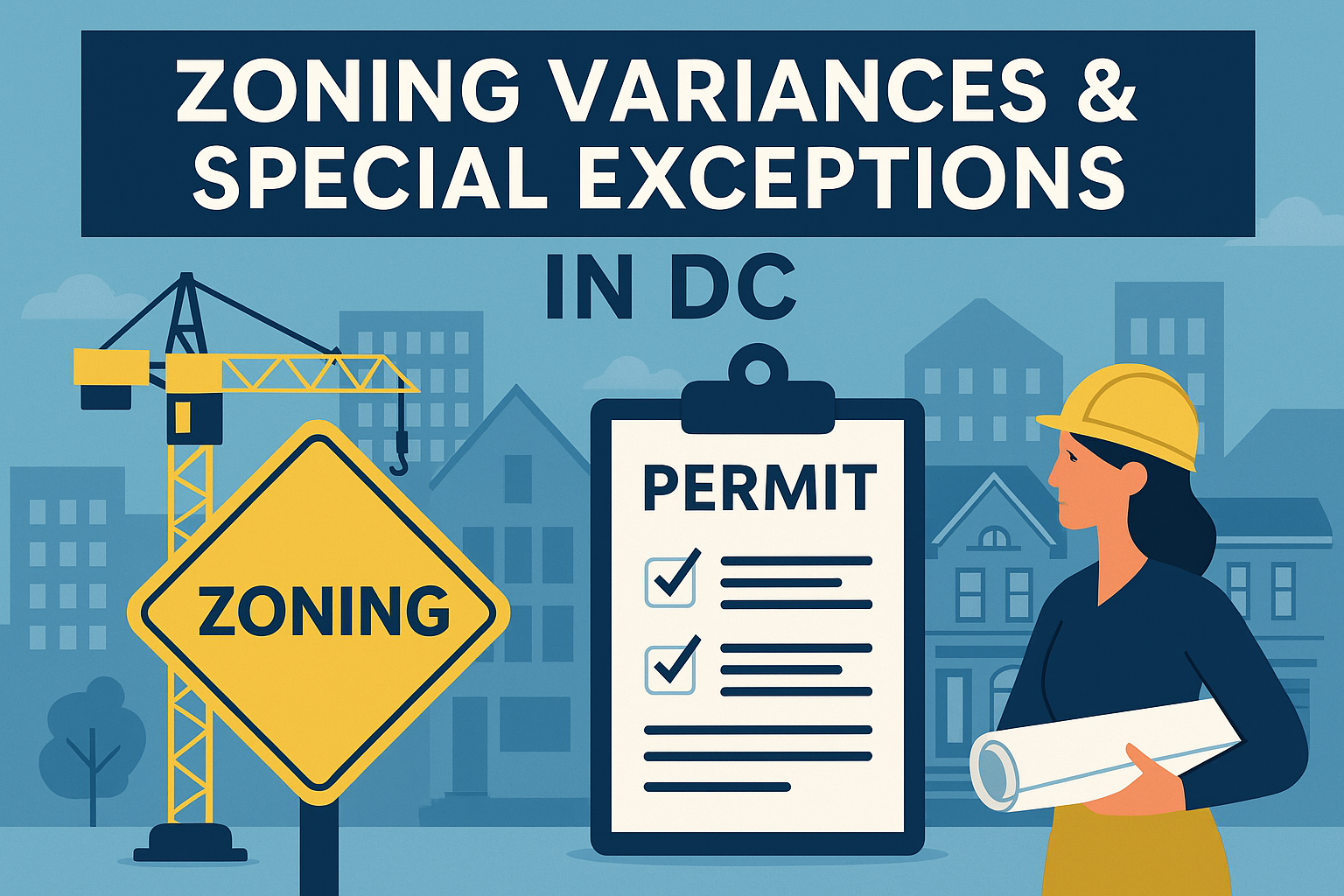DC Zoning Variances & Special Exceptions Explained: When You Need One & How to Apply
Intro: Many projects in Washington, D.C. run into zoning challenges that prevent them from moving forward “by-right.” Whether it’s a rowhouse addition, a new accessory dwelling unit (ADU), or a commercial build-out, you may need a zoning variance or special exception to get approval.
Understanding the difference between the two — and how the Board of Zoning Adjustment (BZA) reviews applications — can save you weeks or months of delay.
✅ What’s the Difference Between a Variance and a Special Exception?
Zoning Variance
Granted when a project can’t reasonably comply with existing zoning rules.
Typically involves hardships (e.g., lot shape, size, or unique conditions).
Harder to get — requires proving strict compliance would cause practical difficulties.
Special Exception
Granted when zoning regulations allow flexibility for certain uses, but only if approved.
Examples: converting a basement into a rental unit, adding a daycare in residential zones.
Easier to obtain than a variance, as long as impacts on neighbors and community are addressed.
🏠 Common Situations That Trigger Zoning Relief in DC
Adding a rear or rooftop addition that exceeds lot coverage limits
Building a pop-up (extra floor on a rowhouse) beyond height limits
Converting a property into a multi-family dwelling
Creating or renting out an ADU (accessory dwelling unit)
Opening a small business in a residential zone
Parking and setback requirements that can’t be met due to lot size
📋 The Application Process: Step by Step
1. Confirm Zoning District
Check the DC Zoning Map to confirm your property’s zoning designation and whether your project complies.
2. Determine the Type of Relief Needed
By-right = no relief required
If not by-right, decide if it qualifies as a special exception or requires a variance
3. Prepare Application to the BZA
Submit:
Completed application form
Architectural drawings
Site plan & zoning analysis
Statement of justification
Photos and supporting documents
4. Notify the Community
You’ll need to notify your ANC (Advisory Neighborhood Commission) and neighbors. Community input can strongly influence approval.
5. Attend the Hearing
The Board of Zoning Adjustment (BZA) will review the case. You or your representative will need to testify.
6. BZA Decision
Special exceptions: often granted if minimal adverse impact
Variances: stricter standard, but still possible with strong justification
⏳ How Long Does It Take?
StepTimelineApplication prep2–4 weeksANC/community engagement4–8 weeksBZA hearing scheduling2–3 monthsFinal decisionImmediately after hearing (with written order later)
Total: Usually 3–6 months, depending on complexity and community response.
💵 What Does It Cost?
Filing fee: Typically $325 – $1,000 depending on project size
Architectural drawings: $2,000 – $5,000+
Expediter / zoning consultant fees: Varies by scope
Legal representation (optional): $5,000 – $15,000+ for complex cases
🚧 Common Challenges & How to Overcome Them
Neighbor opposition → Host meetings early, adjust plans where possible
Incomplete submissions → Double-check forms, drawings, and justifications
Historic district overlap → Coordinate with both BZA and Historic Preservation Office
Long timelines → Hire an expediter to streamline communication with agencies
🛠️ How MCG Permits Can Help
We guide homeowners, architects, and developers through the entire zoning relief process:
✔️ Zoning analysis to determine if relief is required
✔️ Preparing and filing BZA applications
✔️ Coordinating with ANCs and community groups
✔️ Representing clients at BZA hearings
✔️ Navigating both zoning and building permit requirements
📞 Need Zoning Relief in DC?
Don’t let zoning rules stall your project.
👉 Contact MCG Permits today for a consultation, or email sayhello@mcgpermits.com

